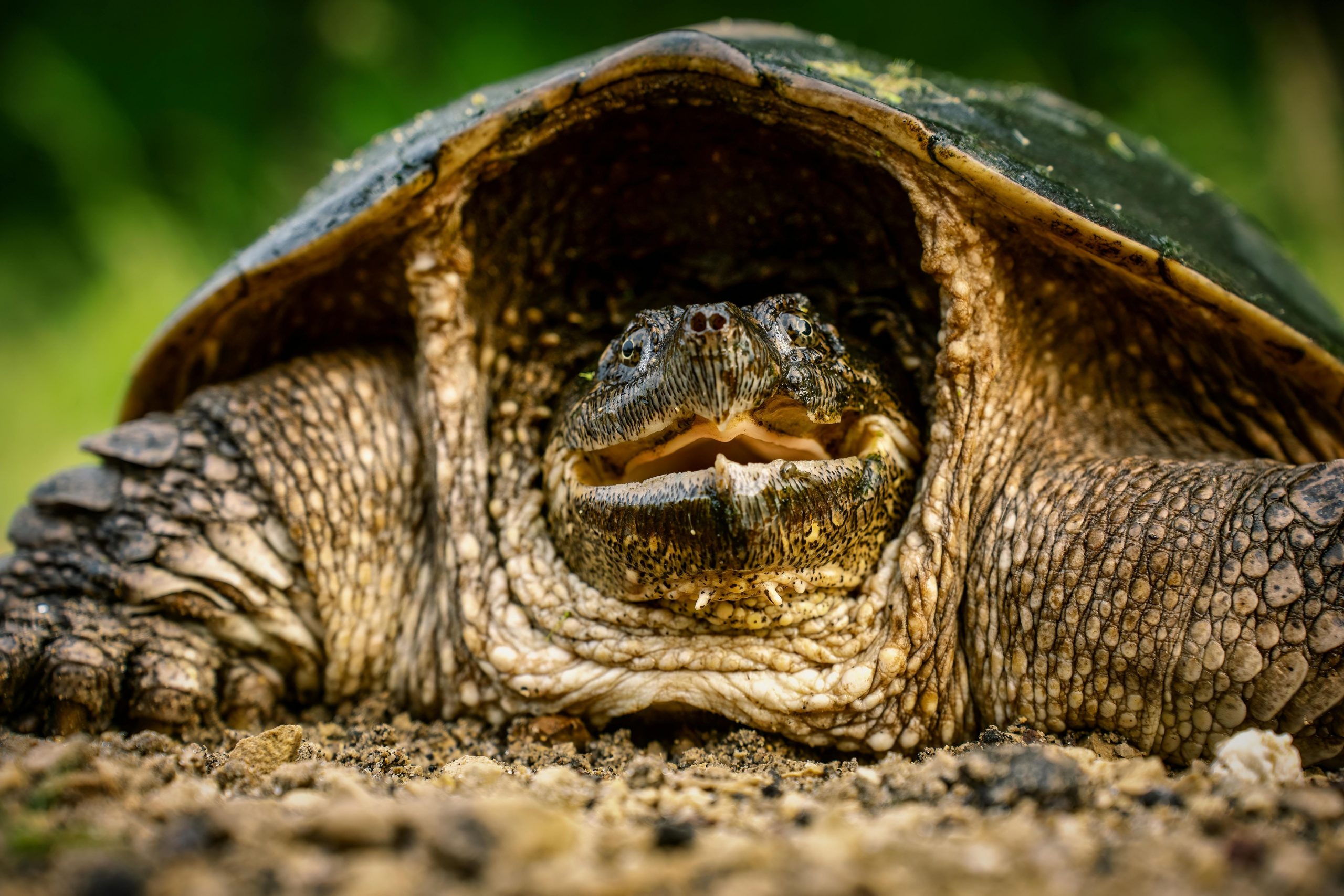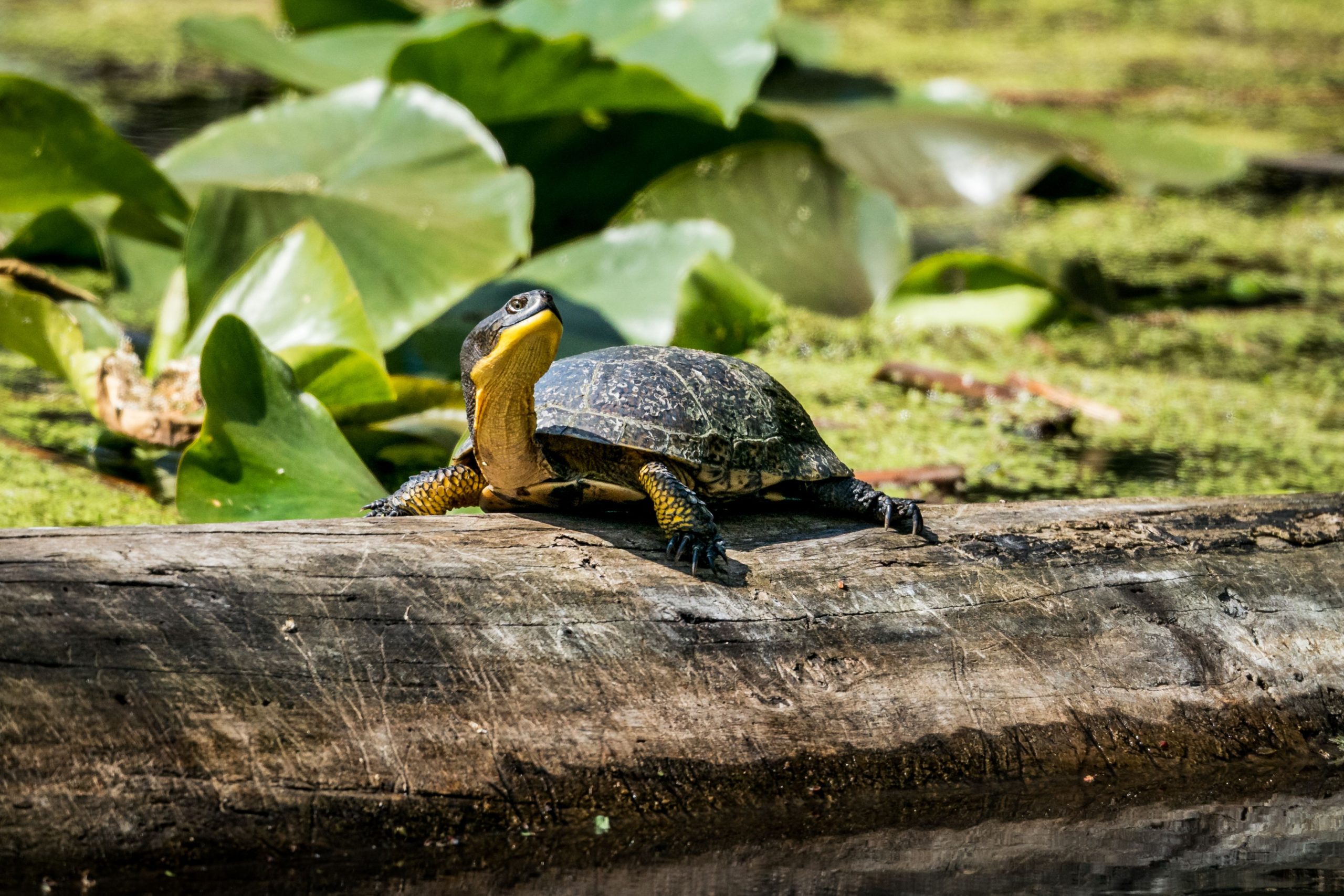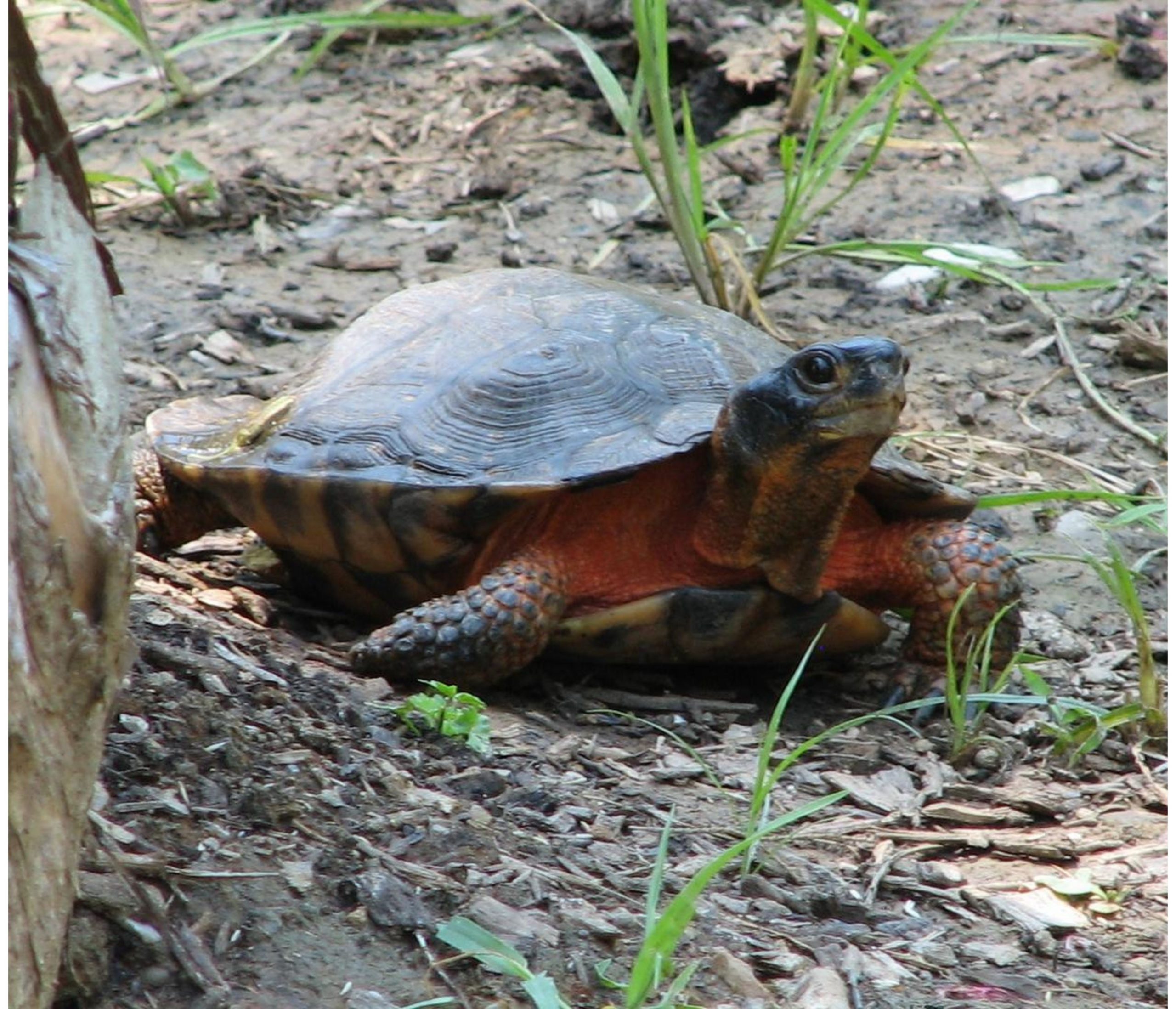Native Species of Turtles
Turtles of New England’s Wetlands
There are several freshwater turtle species adapted to the ponds, marshes, swamps, and slow-moving streams of New England. These turtles play important roles in these aquatic ecosystems, contributing to food webs and helping maintain healthy wetland environments. They vary in size, shell shape, and habitat preference, but all rely on clean, stable wetland habitats for feeding, nesting, and hibernation.
Wetland vs Upland
While this project is primarily focused on wetland turtles, it is important to understand the difference between Wetland and Upland turtles. As mentioned above, Wetland turtles are freshwater turtles that inhabit various types of wetlands, including bogs, marshes, swamps, and wet meadows. Upland turtles are terrestrial turtles that primarily inhabit drier habitats like forests, grasslands, and shrublands, rather than exclusively aquatic environments.
Wetland Turtles
Snapping Turtle (Chelydra serpentina)
The snapping turtle has a large, rugged carapace (upper shell) that ranges from dark brown to olive or black, often with a rough texture and serrated rear edge. Its plastron (lower shell) is small and cross-shaped. The head is large with a hooked upper jaw, and the limbs are strong with sharp claws. It has a long, thick tail with prominent ridges.
Life Cycle of the Snapping Turtle
Eggs
- Laid in late spring to early summer
- Approximately 20–40 eggs per clutch
- Incubate underground for approximately 70–90 days
Hatchlings
- Emerge in late summer or early fall
- Fully independent from birth
- Vulnerable to many predators, including birds and fish
Juveniles
- Grow slowly, feeding on aquatic invertebrates, fish, and plants
- Maturity is reached in approximately 8–12 years
Adults
- Breed yearly or every few years, depending on conditions
- Females lay 1–3 clutches per season
- Lifespan can exceed 30 years in the wild
- Females are larger than males; males have longer tails and larger claws
Painted Turtle (Chrysemys picta)
The painted turtle has a smooth, flat carapace that is olive to black with faint red or yellow striping along the edges. Its plastron is usually yellow to orange with a dark central blotch. The head, neck, and limbs have yellow and red stripes. It is medium-sized and streamlined for aquatic life.
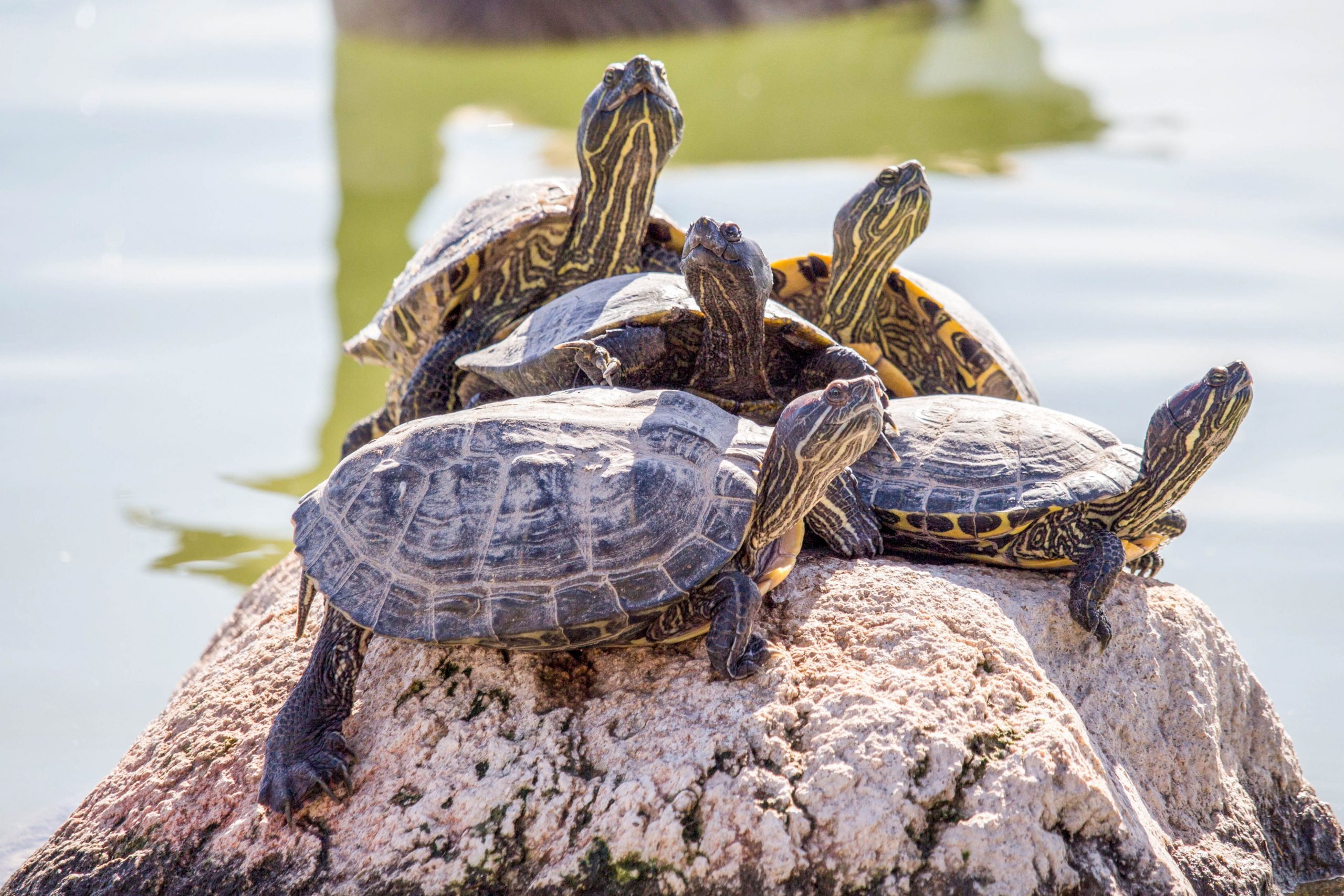
Life Cycle of the Painted Turtle
Eggs
- Laid late spring to mid-summer
- Approximately 4–15 eggs per clutch
- Incubate underground for ~60–90 days
Hatchlings
- Emerge in late summer
- Fully independent from birth
- Vulnerable to predators
Juveniles
- Grow gradually while feeding on aquatic plants and small animals
- Males mature in ~2–9 years
- Females mature in ~6–16 years
Adults
- Breed yearly
- Females may lay 1–4 clutches per season
- Lifespan: 30–40 years
- Females are larger; males have longer claws and tails
Spotted Turtle (Clemmys guttata)
The spotted turtle has a smooth, dark black or brownish carapace adorned with small, bright yellow or orange spots scattered across its surface. These distinctive spots continue onto its head and limbs, making it easily recognizable. The plastron is typically yellowish with some dark markings. This small freshwater turtle has webbed feet adapted for swimming and spends much of its time in shallow wetlands and marshes.

Life Cycle of the Spotted Turtle
Eggs
- Laid in early spring (March to early May)
- Clutch size: 2–8 eggs
- Incubation period: 40–80 days
Hatchlings
- Emerge in late summer to early fall
- Fully independent from birth
- Vulnerable to various predators, including raccoons, skunks, foxes, and birds of prey
Juveniles
- Grow gradually, feeding on a varied diet of insects, earthworms, snails, fungi, berries, and plants
- Maturity reached in approximately 7–14 years
Adults
- Breed yearly
- Females may lay 1–2 clutches per season
- Lifespan: can exceed 50 years in the wild
- Females are larger than males; males have longer tails and thicker hind claws
Musk Turtle (Sternotherus odoratus)
The musk turtle has a domed, oval carapace that is usually brown to gray, often covered in algae. The plastron is small and unhinged, exposing the legs. It has a pointed snout and two distinct light stripes running along the side of its head. The limbs are short and sturdy with webbed feet.
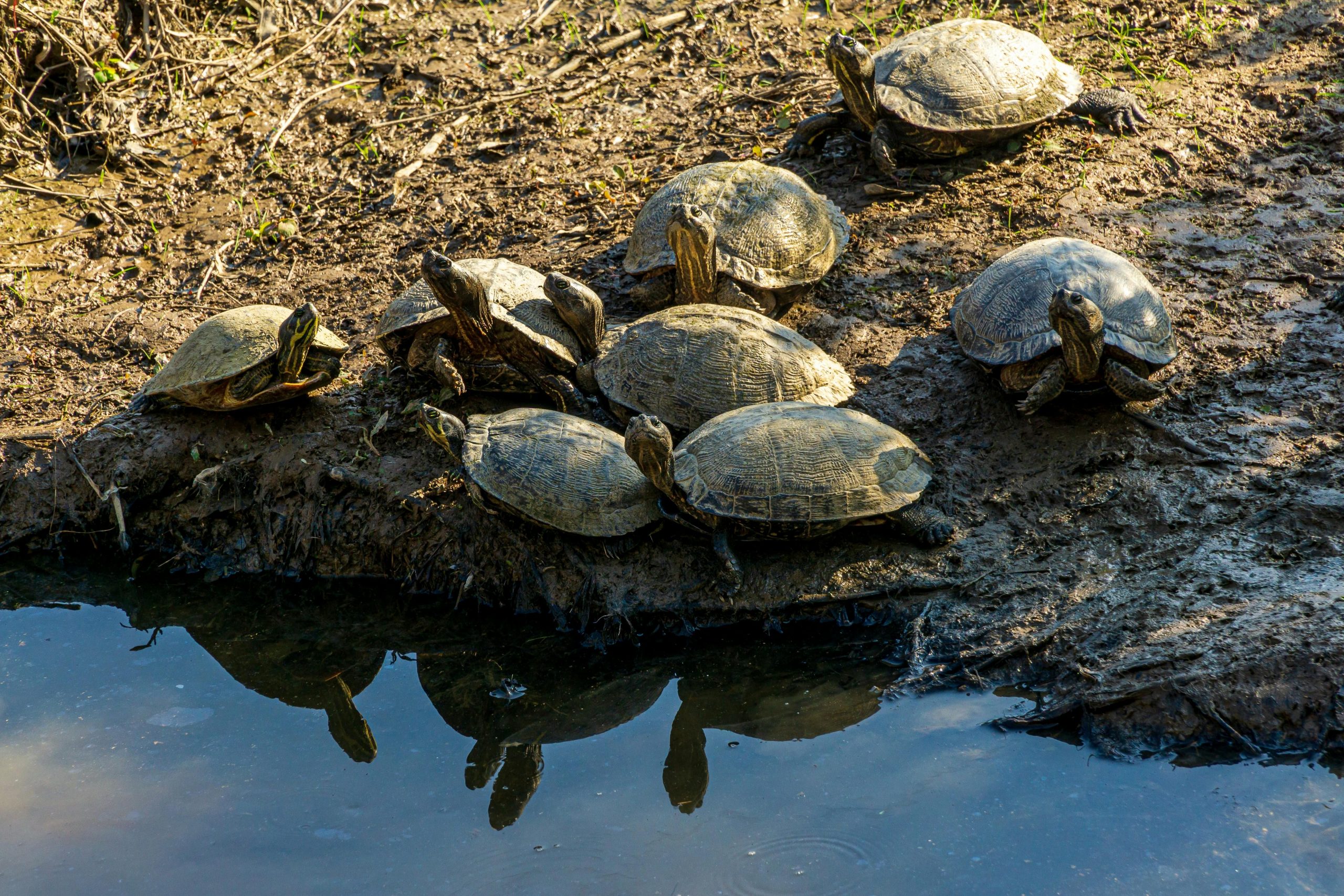
Life Cycle of the Eastern Musk Turtle
Eggs
- Laid from late spring to early summer
- Clutch size: 2–4 eggs per clutch
- Incubation period: Approximately 80–90 days
Hatchlings
- Emerge in late summer to early fall
- Fully independent from birth
- Vulnerable to various predators, including birds and fish
Juveniles
- Gradual growth while feeding on aquatic invertebrates, fish, and plants
- Males mature in approximately 8–12 years
- Females mature in approximately 8–12 years
Adults
- Breed yearly
- Females may lay 1–3 clutches per season
- Lifespan: Can exceed 30 years in the wild
- Females are larger than males; males have longer tails and larger claws
Blanding’s Turtle (Emydoidea blandingii)
Blanding’s turtle is easily recognized by its bright yellow throat and chin, paired with a smooth, domed, dark carapace flecked with lighter spots. The shell is hinged at the front, giving it some ability to close like a box turtle. This semi-aquatic turtle often travels long distances between wetlands and is highly sensitive to habitat fragmentation and road crossings. It is listed as threatened in Massachusetts and requires focused conservation efforts.
Life Cycle of the Blanding’s Turtle
Eggs
- Laid from late spring to early summer
- Clutch size ranges from 6 to 25 eggs
- The incubation period lasts approximately 65 to 90 days
Hatchlings
- Emerge in late summer to early fall
- Fully independent from birth
- Vulnerable to predators such as raccoons, skunks, foxes, large fish, frogs, snakes, wading birds, and crows
Juveniles
- Grow gradually while feeding on crayfish, aquatic insects, mollusks, small fish, earthworms, tadpoles, and aquatic plants
- Males mature at approximately 12 years
- Females mature at approximately 14 to 20 years
Adults
- Breed yearly
- Females may lay 1 to 3 clutches per season
- Lifespan can exceed 70 years in the wild
- Females are larger than males; males have longer tails and larger claws
Upland Turtles
Box Turtle (Terrapene carolina)
The box turtle has a high-domed, rounded carapace that is typically brown or black with yellow or orange radiating patterns. Its plastron is hinged, allowing the turtle to close its shell completely. The limbs are stout with clawed toes, and the head is small with variable coloration, often including orange or yellow markings. Its population is in decline, and it is considered a vulnerable species for conservation efforts in New England.
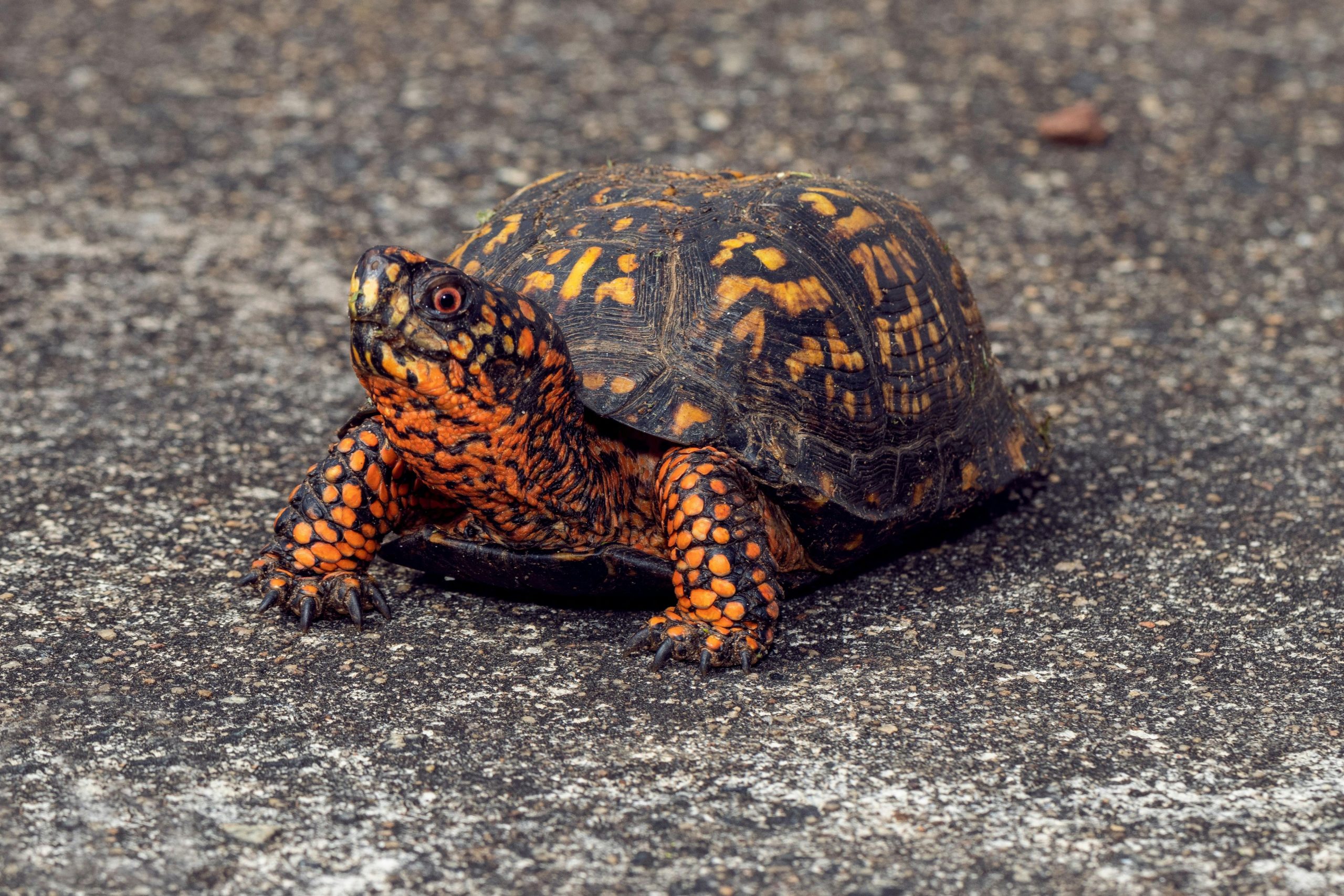
Life Cycle of the Eastern Box Turtle
Eggs
- Laid from early June to mid-July
- Clutch size: 3–11 eggs
- Incubation period: 50–90 days
Hatchlings
- Emerge in late summer to early fall
- Fully independent from birth
- Vulnerable to many predators, including raccoons, foxes, skunks, birds of prey, and snakes
Juveniles
- Grow slowly, feeding on a varied diet of insects, earthworms, snails, fungi, berries, and plants
- Maturity is reached in approximately 7–10 years
Adults
- Breed yearly
- Females lay 3–8 eggs per season
- Lifespan: can exceed 100 years in the wild
- Females are larger than males; males have longer tails and thicker hind claws
Wood Turtle (Glyptemys insculpta)
The wood turtle has a sculpted, ridged carapace that is typically brown or gray with a distinctive, textured pattern resembling carved wood. Its skin can appear orange or reddish along the legs and neck. This species is semi-aquatic, often moving between streams and upland areas, making it especially vulnerable to road mortality during migration. Its population is declining, and it is considered an endangered species of conservation in New England.
Life Cycle of the Wood Turtle
Eggs
- Laid in late spring to early summer
- Clutch size: 3–18 eggs (typically 5–13)
- Incubation period: 47–90 days, depending on temperature and moisture conditions
Hatchlings
- Emerge in late summer to early fall
- Fully independent from birth
- Vulnerable to various predators, including raccoons, skunks, foxes, and birds of prey
Juveniles
- Grow gradually, feeding on a varied diet of insects, earthworms, snails, fungi, berries, and plants
- Maturity is reached in approximately 14–20 years
Adults
- Breed yearly
- Females lay 1 clutch per season
- Lifespan: can exceed 58 years in captivity; maximum lifespan in the wild is unknown
- Females are larger than males; males have longer tails and thicker hind claws
For more in-depth information about these turtles, please visit here.


